Zhejiang, China
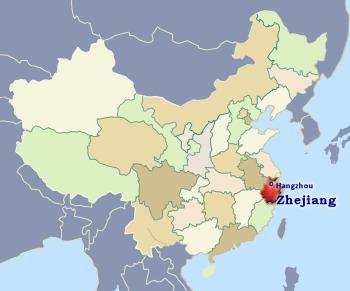
| Province | Zhè jiāng 浙江 'Qiantang River river' |
| Short name | 浙 Zhè |
| Capital | Hangzhou |
| Population | 64.568 million (4.57%) [8th] comparison table |
| Area | 102,000 km2 [39,382 mile2] (1.06%) [25th] |
| GDP | 100,071 (25.83%) [8th] |
| Neighbors | Shanghai Jiangsu Jiangxi Anhui Fujian |
| Others | or just click on the map |
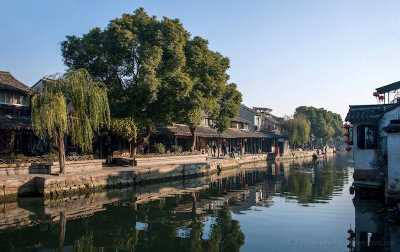
Zhejiang province looks both north to the Yangzi and south-east to the sea. Mountains divide warm coastal Zhejiang from the northern plains. Although one of the smaller provinces by area it has always been prosperous due to high agricultural yields. It is one of only a few provinces named after a specific place, zhe is an old name for the Qiantang River ➚ that joins the Fuchun River and flows through Hangzhou. The Qiantang has another claim to fame, it has the largest tidal bore ➚ in the world. The proof that Zhejiang has been inhabited at least 8,000 years ago has been demonstrated with archeological finds unearthed at Kuahuqiao ➚.

Hangzhou
Hangzhou is an old and interesting city. It stands at the southern end of the Grand Canal from Beijing which was built in the 7th century. Hangzhou served as the capital of China during the Southern Song dynasty when the north was overrun by the Jin dynasty and then the Mongols. Marco Polo wrote "it is without a doubt the finest and most splendid city in the world…" about the city when it was known as Kinsai/Quinsai. More recently the nearby Qinshan ➚ nuclear power plant was the first to be built using Chinese technology.
The West Lake ➚ at Hangzhou ➚ is a famous tourist spot. It was admired by Marco Polo when he visited China. The lake covers 1,483 acres [6 sq kms] acres and has woods on all sides. It has three islands at its center, one of which (Yingzhou) contains a lake which itself has an island. Elegant causeways run along the banks. The Temple of Inspired Seclusion ➚ reached by the Bai causeway on the north bank has fine views. The Su Causeway is named after the famous Song poet Su Shi who was governor of Hangzhou for a while. On the West bank is the Temple to Yue Fei ➚, an unfairly disgraced General on the Southern Song dynasty. Emperor Qianlong was a frequent visitor and built a palace on Gushan hill. Much damage then occurred during its occupation in the Taiping Rebellion. The Phoenix Temple Mosque was founded in 1492. On the south side of the lake is Dragon Well Temple and a popular tea is produced here. Hangzhou has a notable Botanical Garden with an impressive collection of species of bamboo; there is also a sequoia tree planted by President Nixon ➚ on his historic visit to meet Chairman Mao in 1972.
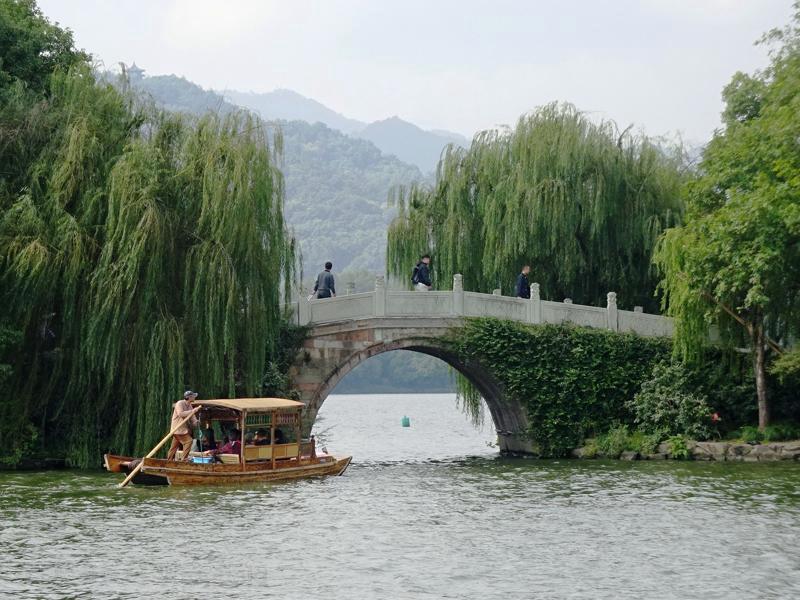
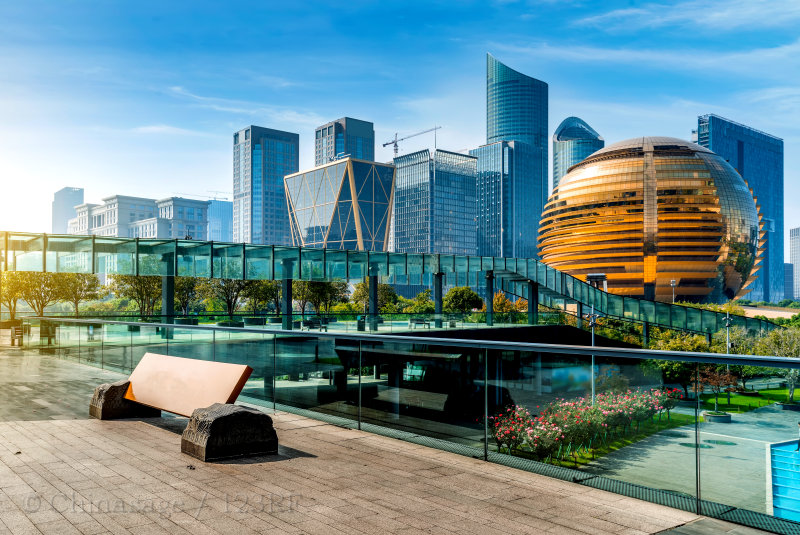
Elsewhere in Zhejiang
At the Orchid Pavilion ➚ Shaoxing there is an outstanding display of calligraphy. However the city of Shaoxing is best known for its rice wine which is produced in vast quantities. Shaoxing was also the capital of the short-lived Yue kingdom in the Warring States period. The famous modern writer Lu Xun, was born in the city and it was also the base for the Republican heroine Qiu Jin ➚.
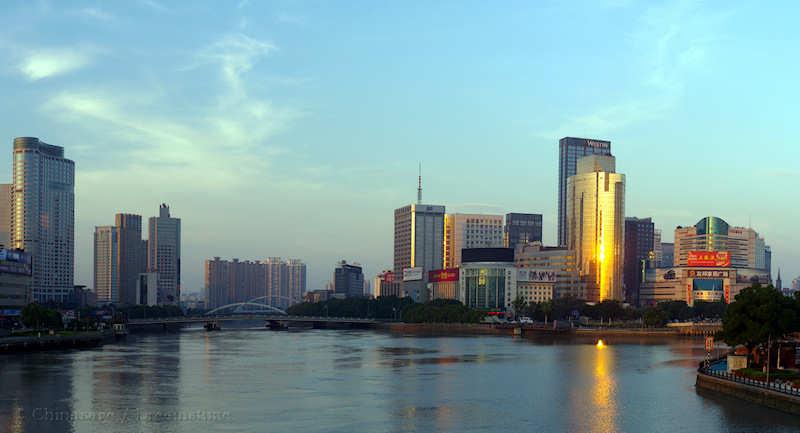
Ningbo ➚ rose to prominence as a sea port in the Tang dynasty and became a treaty port in the 19th century. Chiang Kaishek was brought up nearby; since then it has somewhat lost out to nearby Shanghai. Wenzhou to the South is another ancient sea port that like Ningbo became a treaty port in 1876 mainly for trade in oranges and tea - another famous Zhejiang export with noted varieties Longjing and Huiming Green Tea ➚.
Shangzhou is the home of the much admired Yueju Opera tradition.
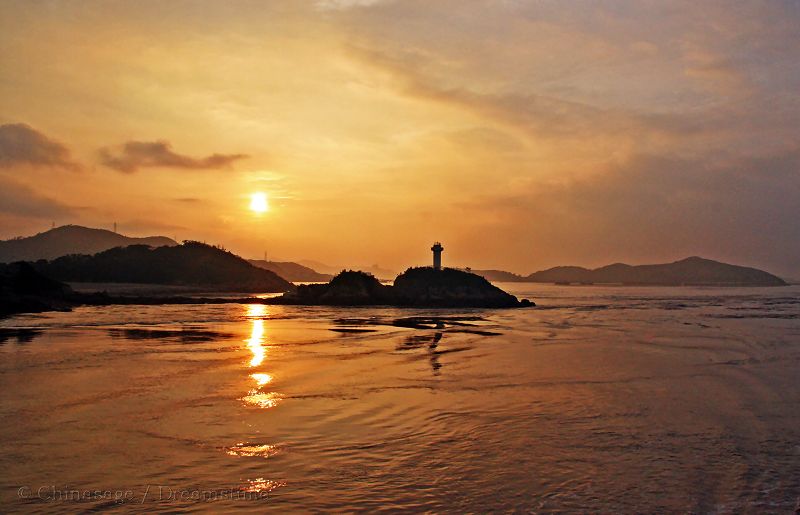
Putuo is a large island sacred to Buddhists but also has many sandy beaches. It has a large statue of Guanyin and many temples but back in 1565 a Dutch raid massacred many of the monks here. The island has a high mountain peak ➚.
Also in Zhejiang is a village at the base of Mount Tiantai ➚ notable for its monasteries founded in the 6th century. Dongyang is a town with some notable Ming dynasty houses.
In the mountainous interior notable places include Huangyajian Peak ➚; and Mount Yandang ➚; Beishan Hill and Mount Tianmu ➚.

History of Zhejiang
The Mausoleum of Yu The Great ➚ of the ancient Xia dynasty is located at Shaoxing south-east of Hangzhou. After the break-up of the Zhou dynasty, Zhejiang was split between the Wu (north) and Yue (south) kingdoms. It became a vassal state of China in the Qin dynasty unification. Later, in the Three Kingdoms period Sun Quan ➚ a native of Fuyuan became the King of Wu. The Wu language is still widely spoken within Zhejiang province.
Geography
Silk has always been an important industry and Zhejiang produces 30% of China's output. Zhejiang is now a heavily urbanized province with a high population density. It has a warm and rather wet climate, receiving frequent typhoons in summer from the East China Sea. Zhejiang's long rocky coastline and many islands support a large fishing industry. To the north the flat land produces copious crops of rice. The mountains produce a large amount of timber and so has an important paper industry.
Airports
The airport has 1 terminal and is located 12.4 miles (20.0 kms) from Taizhou. Live Flight information ➚, rank in China 94
See map of location Taizhou Luqiao Airport
The airport has 2 terminals and is located 3.7 miles (6.0 kms) from Yiwu. Live Flight information ➚, rank in China 69
See map of location Yiwu Airport
The airport has 2 terminals and is located 9.3 miles (15.0 kms) from Ningbo. Live Flight information ➚, Airport information ➚, rank in China 35
See map of location Ningbo Lishe International Airport
The airport has 2 terminals and is located 14.9 miles (24.0 kms) from Wenzhou. Live Flight information ➚, Airport information ➚, rank in China 32
See map of location Wenzhou Yongqiang International Airport
The airport has 3 terminals and is located 16.8 miles (27.0 kms) from Hangzhou. Live Flight information ➚, rank in China 11
International Links to :Thailand Malaysia Korea Japan Holland
See map of location Hangzhou Xiaoshan International Airport
Universities
Zhejiang University 浙江大学
Situated in the former capital of Hangzhou, Zhejiang University often shortened to Zheda is one of China's oldest and largest Universities. It was dubbed the 'Cambridge of the East' by Joseph Needham. The courses cover a wide range of topics.. Undergraduates: 22929, Postgraduates: 21945, International students: 2700, GP World ranking 110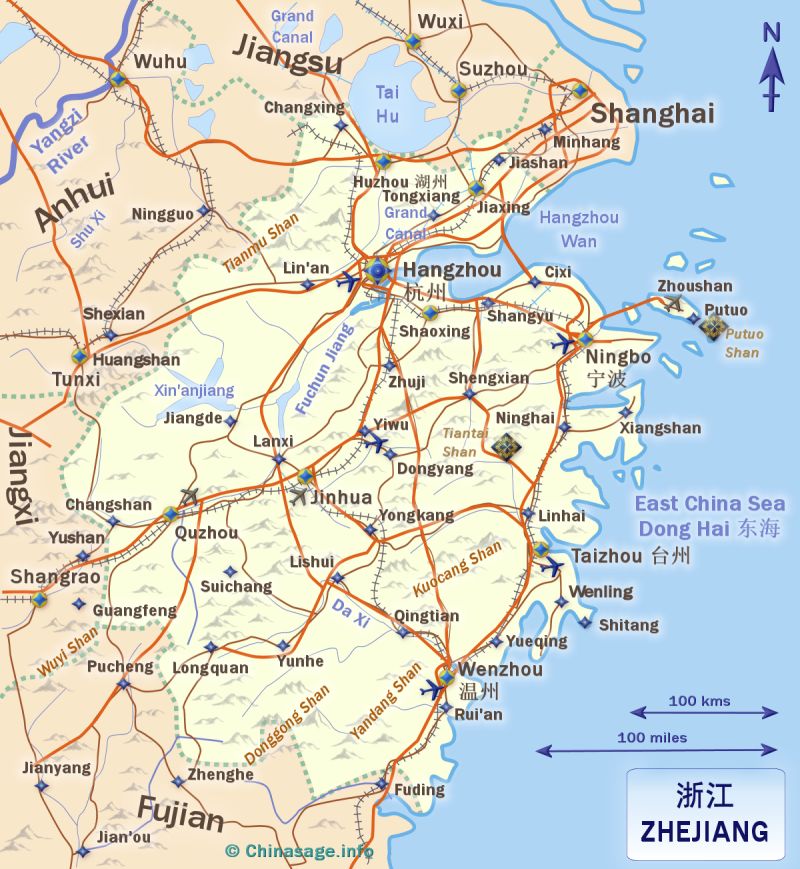
Google map of Zhejiang
Bing map of Zhejiang ➚
Show Bing Map ➚
Zhejiang Climate
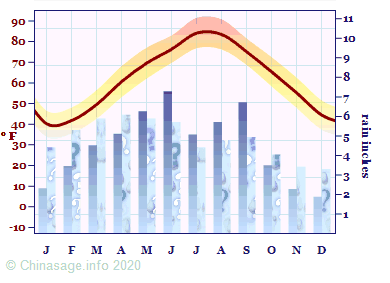
| Major Cities | Population | |
|---|---|---|
| Hangzhou | 杭州 | 10,711,238 |
| Huzhou | 湖州 | 1,558,826 |
| Jiaxing | 嘉兴 | 1,518,654 |
| Jinhua | 金华 | 1,463,990 |
| Luqiao | 路桥 | 427,890 |
| Ningbo | 宁波 | 5,057,140 |
| Quzhou | 衢州 | 902,767 |
| Shangyu | 上虞 | 770,000 |
| Shaoxing | 绍兴 | 2,521,964 |
| Taizhou | 台州 | 1,607,108 |
| Wenzhou | 温州 | 3,604,446 |
| Yiwu | 义乌 | 1,234,000 |
| Zhoushan | Zhejiang | 882,932 |
Web page: :: XINHUANET :: ➚
Book: 60 Scenic Wonders in China: New World Press: 1980 pp. 79-86
Book: China : Eyewitness Travel: Dorling Kindersley: 2012 pp. 240-249
Book: Chronicles of the Chinese Emperors: Ann Paludan: Thames and Hudson: 1998 pp. 27-39
Book: Insight Guides: China: APA publications: 1994 pp. 263-270
Book: Lonely Planet: China: 1988 pp. 316-325
Book: Modern China: A companion to a rising power: Graham Hutchings:… pp. 488-491
Book: Nagel's Encyclopedia guide: China: Nagel: 1978 pp. 1060-1099
Book: Symbols of China: Feng Jicai: Compendium: 2010 p. 101
Web page: Zhejiang (wikipedia) ➚
Web page: Zhejiang Province Map ➚
Web page: Zhejiang Travel Guide - Lakes And Hills With Countless Stories ➚
Web page: Zhejiang Travel Guide: Map: Climate: History: Top Attractions: Local Products ➚
City populations for 2012, Province statistics National Bureau of Statistics 2014